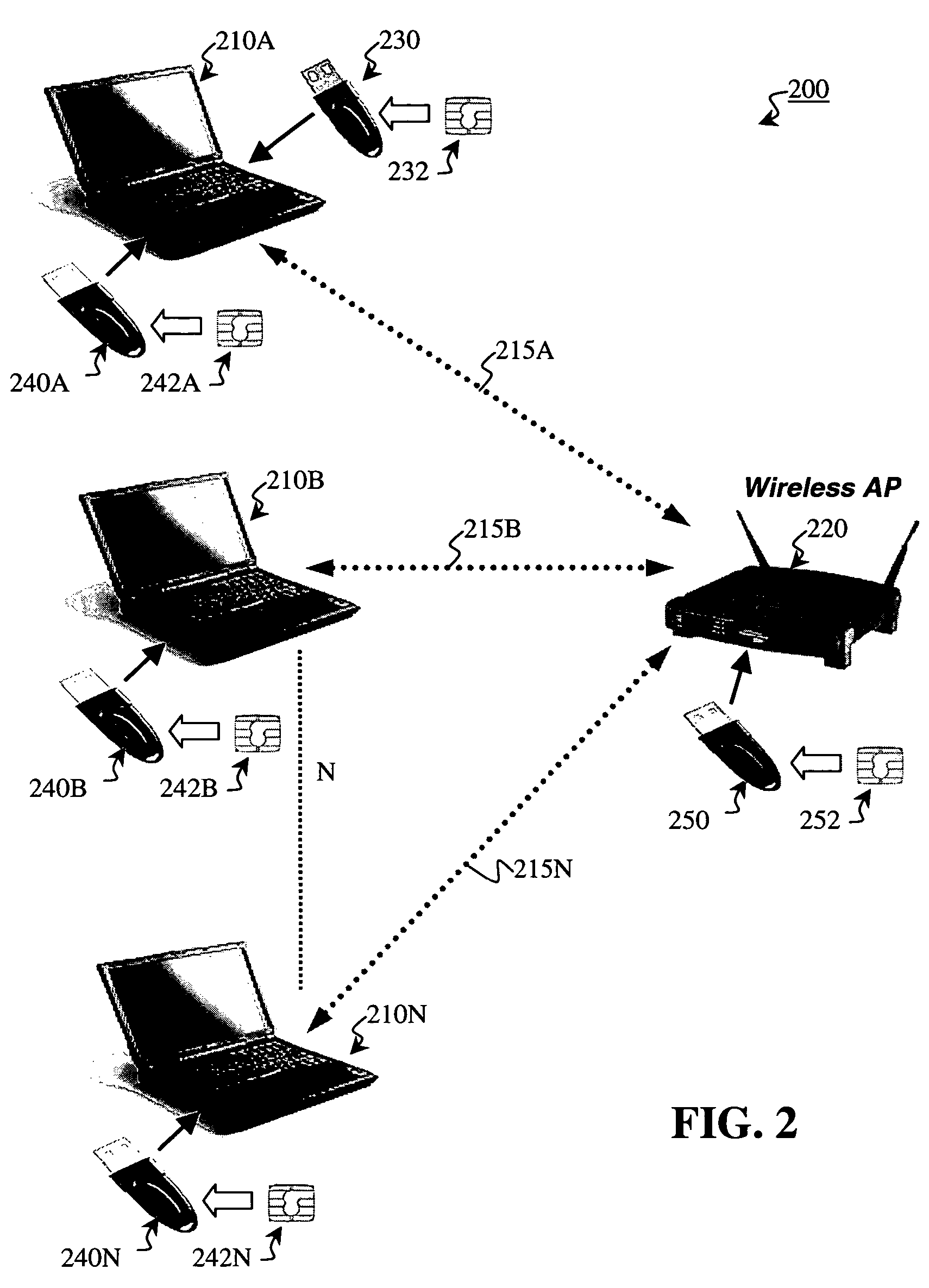Shared network access using different access keys
- Summary
- Abstract
- Description
- Claims
- Application Information
AI Technical Summary
Benefits of technology
Problems solved by technology
Method used
Image
Examples
Embodiment Construction
[0039]Preferred embodiments of the present invention and their advantages may be understood by referring to FIGS. 2-11, wherein like reference numerals refer to like elements, and are described in the context of a Wi-Fi network. Nevertheless, the present invention is applicable to both wired or wireless communication networks in general. For example, the present invention enables secure end-to-end access between a client and any computer residing on a network backbone. Often there may not be a wireless component anywhere in such a situation.
[0040]The present invention implements a secure, local, edge method and system (the implementation of which is herein referred to as communicating in a “secure” mode) employing a combination of software routines and physical keys in the form of easy-to-use adapters that attach to existing computing devices and wireless access points via an available USB port. These physical keys are secure, tamper-resistant physical tokens. “Edge” refers to authe...
PUM
 Login to View More
Login to View More Abstract
Description
Claims
Application Information
 Login to View More
Login to View More - R&D
- Intellectual Property
- Life Sciences
- Materials
- Tech Scout
- Unparalleled Data Quality
- Higher Quality Content
- 60% Fewer Hallucinations
Browse by: Latest US Patents, China's latest patents, Technical Efficacy Thesaurus, Application Domain, Technology Topic, Popular Technical Reports.
© 2025 PatSnap. All rights reserved.Legal|Privacy policy|Modern Slavery Act Transparency Statement|Sitemap|About US| Contact US: help@patsnap.com



